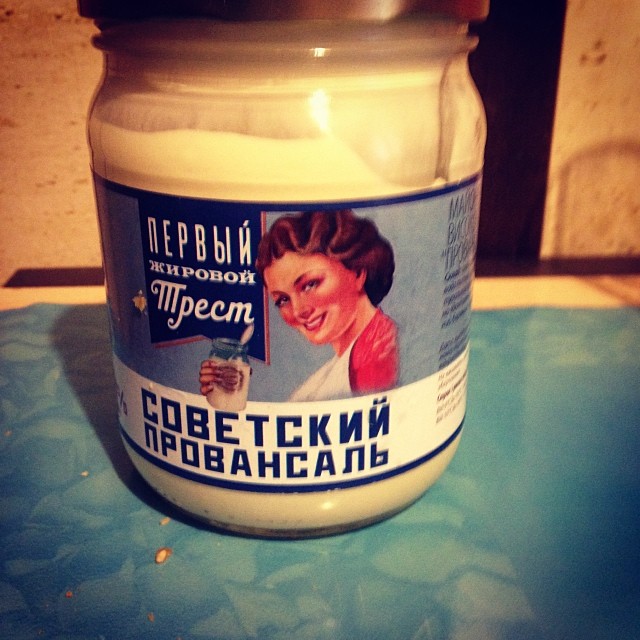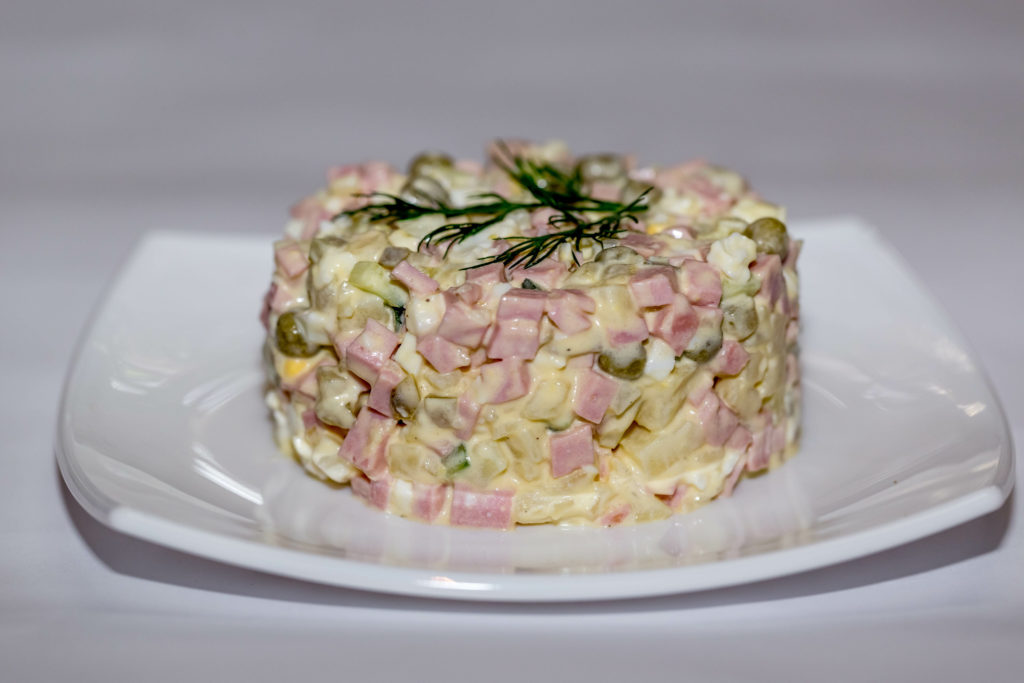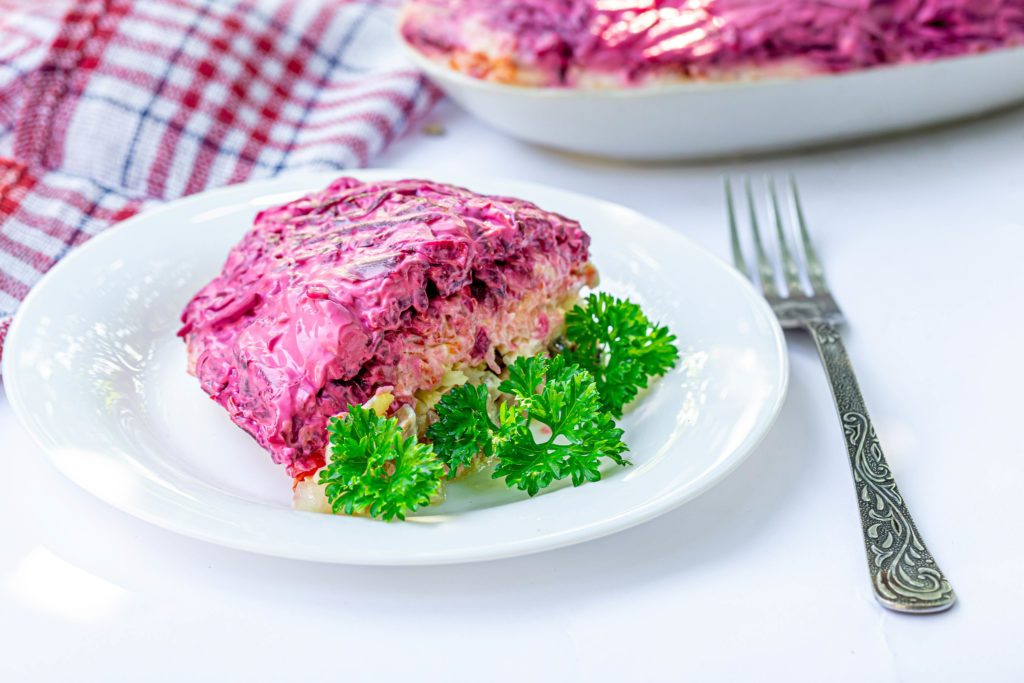What Goes With Any Dish In Russia Posted by Nadya on Dec 23, 2020 in Culture, Russian life
Mayonnaise consumption in Russia ranks among the highest in the world. On average 95% of Russians eat it (even higher in some regions) and per capita consumption in Russia is from 7 to 11 pounds of mayonnaise per year!
Russians are obsessed with mayonnaise (майоне́з) and use it in industrial quantities. They add it to literally everything: meat, fish, potatoes, sandwiches, and even to some pastries. On the festive table (пра́здничный стол), you can often see Мя́со по-францу́зски (literally “French-style meat“, which refers to a pork dish with cheese and mayonnaise) and fish baked with lemon, carrots, onions, and, of course, our favorite dressing (со́ус).
Living in a cold country requires more nutritious food, and mayonnaise is rich in fats (жиры́). The most common type of it is “Прованса́ль” (“Provansal“), with a 67% fat content. It is almost the same consistency as sour cream, but more piquant (пика́нтный) and saturated (насы́щенный), so it is used with a lot of the same dishes. “С майоне́зом всё вкусне́е” – “Everything tastes better with mayonnaise,” Russians joke.
Food preferences are formed during childhood, so even new dishes repeat old tastes. For many people, mayonnaise is part of their daily diet. Others associate it with the winter holidays since practically all of the most popular Russian salads contain this ingredient. Mayo salad is best when it’s cold outside. “Оливье́” (“Olivier“), “Мимо́за“ (“Mimosa“), and “Селёдка под шу́бой“ (“Herring Under a Fur Coat“) or simply “Шу́ба” (“Fur coat“) are the symbols of the traditional Russian New Year.
At the same time, due to a large amount of sauce (со́ус) in such salads, no one will cook them in the summer – it’s too heavy on the stomach (тяжело́ для желу́дка) in hot weather. It’s likely eaten more in those regions of the country with a colder cold climate. In the late 1990s, I lived near Siberia and don’t remember anyone who, at that time, would refuse meals with this dressing. I only started hearing about the potential dangers of fats and carbs after healthy eating became popular. Today, many nutritionists consider mayonnaise to be quite unhealthy (вре́дный для здоро́вья/нездоро́вый), but earlier, Soviet posters named it as an excellent healthy condiment for all cold meat, fish, and vegetable dishes.
The original recipe for mayonnaise is very simple:
– egg yolk (яи́чный желто́к),
– vinegar (у́ксус),
– vegetable oil (расти́тельное ма́сло),
– salt (соль),
– pepper (пе́рец).
Various flavoring ingredients such as lemon (лимо́н) or mustard (горчи́ца) can be added. In the Soviet Union, the powdered egg (яи́чный порошо́к) was used instead of egg yolk, and sugar (са́хар) was added so that the sauce had a longer shelf life. On the other hand, it was free of coloring, stabilizers, and other chemicals. For example, in “Provansal,” the only preservative was spirit vinegar, thanks to which it had such a specific, easily recognizable taste.
Having come a long way from France, mayonnaise has become a real legend of Soviet cuisine. At that time, it was one of the deficit products that could exclusively be obtained if you had the right connections. The country’s love for this sauce is also due to the limited food variety in stores back then. It was a creative way to give a meal a richer flavor. Since the late 1990s, it has been widely available. With the advent of new technologies, the food industry in Russia has developed greatly, and now you can find mayo for any taste. It looks like the consumption of this magic sauce will not decrease anytime soon.
In fact, it’s so popular, I’ll wrap up with a song about mayonnaise performed by the “Ура́льские пельме́ни” – “Ural Pelmeni” team from the famous Russian humor TV show “KVN.”

Build vocabulary, practice pronunciation, and more with Transparent Language Online. Available anytime, anywhere, on any device.








